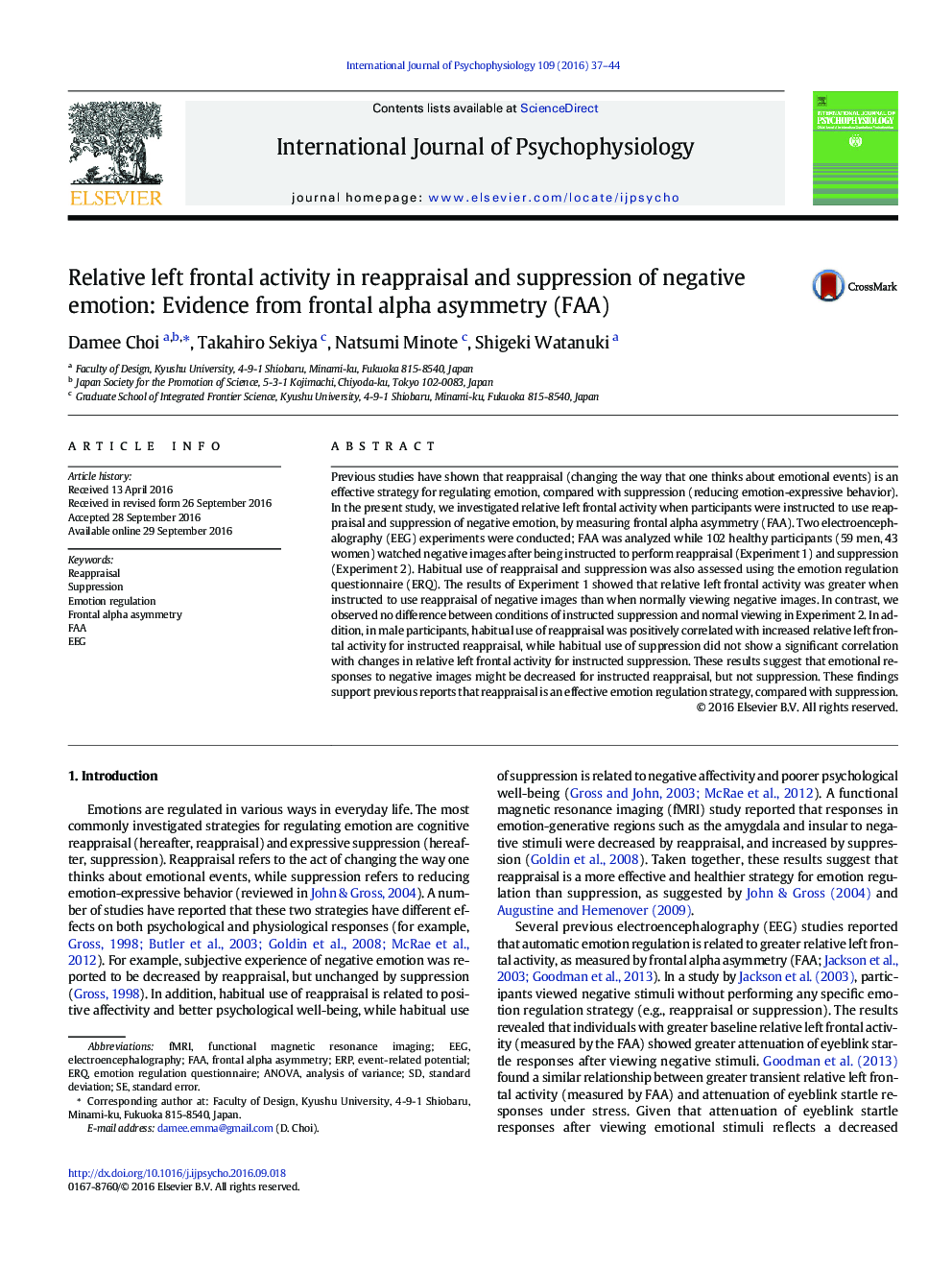| Article ID | Journal | Published Year | Pages | File Type |
|---|---|---|---|---|
| 5042414 | International Journal of Psychophysiology | 2016 | 8 Pages |
â¢We used frontal alpha asymmetry (FAA) as a relative left frontal activity index.â¢FAA was greater in reappraisal, compared with normal observation.â¢FAA was no different between instructed suppression and normal observation.â¢In men, habitual reappraisal was positively related to FAA change in reappraisal.
Previous studies have shown that reappraisal (changing the way that one thinks about emotional events) is an effective strategy for regulating emotion, compared with suppression (reducing emotion-expressive behavior). In the present study, we investigated relative left frontal activity when participants were instructed to use reappraisal and suppression of negative emotion, by measuring frontal alpha asymmetry (FAA). Two electroencephalography (EEG) experiments were conducted; FAA was analyzed while 102 healthy participants (59 men, 43 women) watched negative images after being instructed to perform reappraisal (Experiment 1) and suppression (Experiment 2). Habitual use of reappraisal and suppression was also assessed using the emotion regulation questionnaire (ERQ). The results of Experiment 1 showed that relative left frontal activity was greater when instructed to use reappraisal of negative images than when normally viewing negative images. In contrast, we observed no difference between conditions of instructed suppression and normal viewing in Experiment 2. In addition, in male participants, habitual use of reappraisal was positively correlated with increased relative left frontal activity for instructed reappraisal, while habitual use of suppression did not show a significant correlation with changes in relative left frontal activity for instructed suppression. These results suggest that emotional responses to negative images might be decreased for instructed reappraisal, but not suppression. These findings support previous reports that reappraisal is an effective emotion regulation strategy, compared with suppression.
